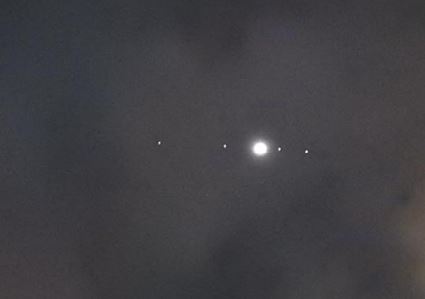By Aarya Krishnan
Stockholm, Aug 1: Did you know Jupiter has 79 known moons, not including many moonlets (minor moons)? Ganymede is Jupiter’s largest moon and the largest moon in the solar system. It is larger than the planet Mercury!
Previous research has proven that Ganymede contains a lot of water on it, but it is all in the form of solidified ice. Images from Hubble’s Space Telescope Imaging Spectrograph (STIS) from 1998 revealed colourful ribbons of electrified gas known as auroral bands which confirm the presence of just molecular oxygen (O2) but not water vapour (H2O).
This understanding has recently changed, as an analysis both old and new observations from Hubble’s STIS reveal that Ganymede’s atmosphere also contains water vapour. A team lead by Prof. Lorenz Roth of the KTH Royal Institute of Technology in Stockholm discovered this for the first time. They concluded that the presence of water vapour in Ganymede is due to the Jupiter moon experiencing extremely high temperatures during midday when the otherwise icy crust undergoes sublimation (directly converting from a solid form to vapour form) forming water vapour. Their
findings were published in the recent edition of Nature Astronomy.
The discovery came ahead of the European Space Agency’s (ESA) forthcoming JUICE, or Jupiter Icy Moons Explorer mission. The mission is scheduled to launch in 2022 and arrive at Jupiter in 2029. After that, it will spend at least three years investigating the planet and three of its larger moons, Europa, Ganymede and Callisto with icy crusts. JUICE will pay special attention to Ganymede, by entering its orbit to gain a better knowledge of both its surface and atmosphere.

